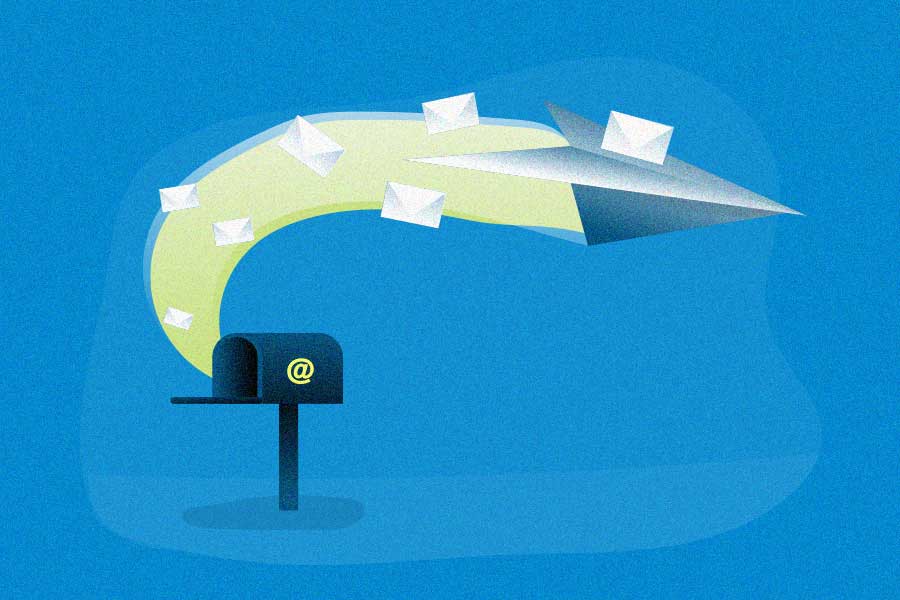Why do you need a marketing channel strategy?
It’s usually a waste of time and resources to try to be present on every channel out there. You don’t want to spend money to market your company somewhere your target audience won’t see your messages. Rather, you need a channel strategy, or a plan for which channels you’ll invest in to market your company, based on your brand identity and the habits of your target audience.
Your current and potential customers search for, and expect to find, your brand on the channels they frequent most. And once they find you, they expect a consistent, branded experience across all those channels – another important reason why you need a channel strategy.
On the right channels, you’ll be able to engage potential customers where they are, and make them more likely to purchase from you.
Today, we cover different channels your brand might use when developing channel marketing strategies, the steps and best practices for developing a channel strategy, and what it means to have a multi-channel strategy or omnichannel strategy.
Popular types of marketing channels
Before we go any further, it’s important to define the features that make a marketing channel.
- A channel is any touchpoint where you can deliver a marketing message and connect with customers – or where you can enlist someone else (such as a partner or loyal customer) to deliver that message for you.
- Each channel opens up unique ways to convince your target customers to purchase from you.
- You must be able to measure the success of your marketing efforts on every channel you use.
Popular marketing channels include:
|
|
|
What is a multi-channel strategy?
A multi-channel strategy involves carefully selecting several marketing channels and using them to connect with both potential and current customers.
For instance, if you use your website, a company blog, a Twitter account, email marketing campaigns, and PPC ads to market your brand, then you’re using a multi-channel strategy. Any strategy involving at least two channels counts as multi-channel, which makes up the vast majority of marketing strategies.
Just like with any channel marketing strategy, a crucial part of multi-channel strategy is selecting the channels your target market frequents most. Selecting many channels without a rationale isn’t an effective multi-channel strategy.
What is an omnichannel strategy?
A brand with an omni channel marketing platform provides a seamless, coherent experience across all of its marketing channels.
Many people think omnichannel strategy and multi-channel strategy are synonymous, but this isn’t true. An omnichannel strategy builds on a multi-channel marketing strategy and kicks it up a notch.
As Hubspot explains, “All omnichannel experiences will use multiple channels, but not all multi-channel experiences are omnichannel… You can have amazing mobile marketing, engaging social media campaigns, and a well-designed website. But if they don’t work together, it’s not omnichannel.”
If you use an omnichannel strategy, your brand will project the same goals, messaging, voice, imagery, and all other aspects of its branding across all its channels. The way you deliver this message will be optimized for each channel, but the core branding will stay unified.
This way, all members of your audience will receive a consistent picture of what your brand stands for, no matter what channel they encounter your messaging on. And whenever they transition to a new channel as they move through the marketing funnel, they’ll still receive the same integrated brand experience.
As a result, your brand and its values will be more likely to stick in your audience’s minds (and they’ll be more likely to purchase from you down the road). So, if you’re developing a channel marketing strategy, omnichannel is best.
7 steps to develop a stellar channel strategy
Now that you understand what makes a channel, and the basics of multi-channel and omnichannel strategies, let’s dive into best practices for developing a stellar channel marketing strategy. Follow these seven steps for channel strategy success.
1. Know where your audience is, and your select channels accordingly
We can’t emphasize this enough – a vital part of a channel strategy is selecting the channels that your audience frequents most. You’ll need to know your audience, and the channels they’re already viewing and using, before you proceed.
Answering these questions will help you select the best channels for your audience:
- Where do people in your target audience search for information, especially in the niche your brand occupies?
- What channels do they use to communicate with friends and colleagues?
- What are people saying about your brand’s niche, and where?
2. Match customer needs with your channels
Don’t just consider the spaces your customers frequent most, though. Think about what your audience needs, and how you can strategically select channels to position yourself to meet those needs.
How can each channel help convince your audience to buy from you, and how does each channel play into your overall branding and marketing strategies?
For example, if you’re a teen clothing brand with online and brick-and-mortar stores, you’ll probably use Instagram campaigns, word-of-mouth marketing, and influencers as prime marketing channels. And of course, you’ll want to optimize your website to advertise what’s new and make your online store easy to navigate.
After all, teens want to see what’s trending with their peers, but the actual ecommerce buying process is pretty straightforward: Once your audience sees something they like from your store, they’ll likely buy quickly.
But if you’re a software brand selling to B2Bs, you’ll need to use channels to educate your audience during their long selection process, and show them how your software will meet their company’s needs.
Businesses usually do plenty of research on any software they plan to purchase before contacting the company. An SEO strategy and a PPC ad strategy will help them find you when they search for your type of software online. Meanwhile, content marketing (blog posts) focused on answering questions in your area of expertise will help them trust you. As will making connections and answering questions on LinkedIn.
[su_icon_text color=”#474747″ icon=”icon: lightbulb-o” icon_color=”#0088cc” target=”self”]Surveying your existing customers, using market research tools, and paying attention to your brand mentions can help you position yourself on the right channels for your audience’s needs.[/su_icon_text]3. Run a competitive analysis
Analyze your competitor’s channel strategies to determine how you can differentiate your own strategy. You’re fighting for the same audience’s eyes, so you’ll need to make sure your channel strategy stands out.
- How are your competitors reaching the same audience you’re targeting?
- What channels are they using?
- Have they missed any prime channels for reaching your audience?
- How are they positioning themselves, with messaging, voice, and imagery, on each channel?
- What keywords and buzzwords are they using to position themselves?
- Are they using a multi-channel or omnichannel strategy?
- What parts of their channel strategy work well for them?
- What mistakes have they made in executing their strategy that you should avoid?
As part of this competitive analysis, run a SWOT check (strength, weakness, opportunity and threat) on each competitor.
- What are the strengths and weaknesses of each competing channel strategy?
- What opportunities has a competitor missed that you can take advantage of?
- What significant threats does each competitor pose that you’ll need to counteract?
4. Go omnichannel, with a consistent message across all channels
As we mentioned earlier in this article, putting together an omnichannel strategy is usually best, It helps you establish brand consistency, ensures your brand will be memorable for the right reasons, and leaves no questions about what you stand for.
Decide on the goals, messaging, imagery and brand voice you’d like to project across all of your channels, and how you can deliver an optimal experience for each channel. Also, determine how each channel fits into your integrated brand experience and ultimately convinces an audience member to purchase from you.
5. Set goals for each channel you choose
Now that you’ve selected which channels to focus on, it’s time to set measurable goals to track the success of your channel marketing strategy. Each channel will likely have a different main goal or goals, depending on where each fits into the buyer’s journey. Also, you’re allowed to set more than one goal for a channel, as long as every goal is measurable.
[su_icon_text color=”#474747″ icon=”icon: lightbulb-o” icon_color=”#0088cc” target=”self”]You’ll want to measure leads generated directly through at least one of your channels. And of course, you’ll also need to measure the sales generated as the result of at least one marketing channel.[/su_icon_text]For example, you might track traffic to your site as a result of SEO and content marketing, but measure your brand’s own social media campaigns based on engagement or by leads generated from campaigns. You might also track leads generated via word of mouth (yes, word-of-mouth marketing can be measurable, especially if you use a referral program as one of your channels!)
Meanwhile, you might track purchases motivated by an affiliate or influencer campaign, and both click-through rate and purchases made as a result of an email campaign.
6. Understand and use best practices for each channel you choose
To optimize your channel marketing strategy, you’ll need to apply best practices for each channel you choose. Follow the links below to learn about best practices for some of the most popular marketing channels:
- Email marketing
- Social media marketing
- Content marketing
- Pay-per-click (PPC) advertising
- Social media advertising
- SEO
- Public relations
- Influencer marketing
- Affiliate marketing
- Brand ambassadors
- Word of mouth
- Referral marketing
7. Collect data and use it to refine your strategy
Don’t just set up your channel strategy and leave it be. Regularly collect data on the measurable goals you set for each channel, and use that data to help you refine each piece of your channel marketing strategy.
It’s also recommended to continue collecting data on your audience’s habits and needs. The channels they frequent most may change as their needs evolve – and if this happens, your channel strategy should change accordingly.
Wrapping up
A channel strategy is all about selecting the marketing touchpoints that match your target audience’s needs and habits. As you choose your channels, be sure to analyze competitors’ strategies, continually research your target audience, set and track goals for each channel, and follow each channel’s own best practices.
And remember – going with an omnichannel strategy, where you create a unified brand experience across all channels, usually offers the greatest benefits.





